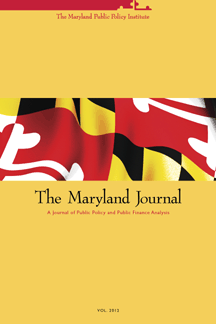Rethinking Teacher Pensions in Maryland
Introduction
During the 2006-2007 school year, the most current year for which national data are available, U.S. public schools spent $288 billion for staff salaries and $95 billion for benefits. These compensation payments account for 80 percent of K-12 current expenditures.1 While there has been growing interest in reform of salary determination for educators, there has been less discussion of reform of deferred benefit systems. This is changing, however, since most teacher pension systems have very large unfunded liabilities and state legislatures are struggling to keep these systems solvent.
Overview of Teacher Pension Systems
Maryland teachers, like nearly all public school teachers, belong to a defined benefit (DB) pension plan. Defined benefit plans provide a guaranteed payment (annuity) to a teacher on retirement. The value of this annuity is based on combination of years of service and final salary. In theory, for any cohort of teachers, the flow of teacher and employer contributions over the work life of the teachers should be adequate to pay the expected flow of benefits when they retire. At any point in time, the assets of the fund should be at least as great as the liabilities that have accrued.
To read or download the full article or PDF, please login or become a subscriber.






